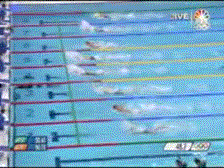China’s overseas purchases and imports of pork and pork products in calendar year 2008 were unprecedented for any single country in history, according to U.S. Meat Export Federation (USMEF) calculations from just-released Chinese trade data.
Based on import totals from China and Hong Kong,
the country imported 1.925 million metric tons (4.2 billion pounds) of pork and pork products last year, including 1.161 million tons (nearly 2.6 billion pounds) of pork variety meats and 764,000 tons (1.7 billion pounds) of pork cuts.Available trade data suggests that China’s imports eclipsed the previous single-year record of 1.022 million tons (2.2 billion pounds) of pork imported by Japan in 2005.
“The volume demonstrates the huge influence China can have on global markets when supply and demand become imbalanced,†said Joel Haggard, senior vice president of USMEF’s Asia Pacific region.
“The import volume, though huge, represents less than 5 percent of China’s consumption.â€Although final data for 2008 is not yet in, USMEF estimates that total U.S. pork and pork product exports to China and Hong Kong reached 386,000 tons (851 million pounds)
valued at nearly $700 million in 2008. The EU and Brazil were the other major pork suppliers to the region.
Haggard believes it is unlikely that China’s pork imports this year will match last year’s record.
Increased industry profitability last spring, coupled with a range of hog raising subsidies, has resulted in a substantial expansion of China’s herd, and lower hog and pork prices. As of yesterday, live market hog prices in China averaged RMB 12.75/kg., or $84/cwt.,
25 percent below the record RMB 17.04/kg. price set in April last year.
According to the National Bureau of Statistics, by the end of the third quarter of 2008,
China’s live hog inventory had increased 6.6 percent from the year-earlier figure, and the
sow population increased 12.4 percent. Total marketed hogs increased 5.8 percent and
meat production was up approximately 6 percent.Although the post lunar new year early spring period usually marks the annual low point in demand, USMEF has heard reports of serious respiratory disease outbreaks that could be adding a bearish tone to the market. That said, USMEF expects imported variety meat demand to hold through 2009, although U.S. muscle cuts face stiffer competition from domestic supplies.
On Jan. 12, China’s National Development and Reform Commission (NDRC), the state’s leading macroeconomic planning and policy agency under the State Council, in concert with key ministries including the Ministry of Commerce, the Ministry of Agriculture, AQSIQ and the Ministry of Finance, announced a new temporary pork price stabilization program ostensibly designed to smooth out the country’s volatile hog cycle.
Specifically, the program establishes an early warning system for low live hog and pork prices based upon the ratio of live hog to grain prices. As the live hog to corn price index drops, the program sets triggers for different policy actions by central and local authorities, ranging from mandating government purchases of pork for reserves to restricting imports and stimulating exports if prices drop into a “red†zone range.
China’s first new central policy document of the new lunar year of the ox pledged “tough†measures to support rural areas and agriculture this year. China noted that rural areas face the most difficult challenges during the global economic downturn. With 40 percent of rural income dependent on non-farm work, such as manufacturing jobs in coastal factories, the loss of overseas demand will translate directly into pain for the rural sector.
Results of a new Chinese survey announced yesterday estimate that 15 percent of migrant rural workers - approximately 20 million people - have lost their jobs due to the economic crisis. A number of subsidy increases have been announced for the rural sector in addition to those for the hog-raising sector, including farm machinery and appliance purchasing subsidies, and a 16 percent rise in the minimum purchase price for grain.
(From Cattle Network)
http://www.ehedger.com/2009/02/03/china ... y-in-2008/
It's all about "how much you made when you were right" & "how little you lost when you were wrong"

